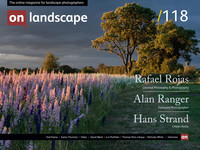Andrew Mellor, Janet Salmon, John Erskine & Peter Williams

Andrew Mellor
My photography explores natural and man-made environments, and the interaction between the two with concerns over how we use the landscape and the social and political issues surrounding it. Often exploring change and human impact. I am drawn to ordinary places, seeking to find interest in everyday spaces.

Janet Salmon
I am an amateur landscape photographer living in North East England.i bought my first DSLR in 2010, and so the obsession began.

John Erskine
Born and educated in the UK and having worked in various parts of the world, I now live in South Africa. I am a keen amateur photographer; for many years I have travelled the world, capturing images of what I see.

Peter Williams
Peter Williams (aka pw-pix) is an artist who works with photography. Taking his surroundings as subject matter while commenting on the everyday, Williams often creates work using the seemingly mundane, but looking deeper to find interest and beauty.
Our 4x4 feature is a set of four mini landscape photography portfolios from our subscribers, each consisting of four images related in some way. You can view previous 4x4 portfolios here. Please click the images to see them in full.
If you would like to submit your 4x4 portfolio, please visit this page for submission information. We are looking for contributions for the next few issues, so please do get in touch if you're interested!
Andrew Mellor
On the Fringe
Prior to the arrival of the tourist industry, the population of Benidorm numbered only 3,000 and its main economy was fishing. In the early 1950s, the industry started declining. Faced with an economic struggle the town council approved the ‘Plan General de Ordinacion’, employing all the town’s resources into tourism. A mass building programme was orchestrated to accommodate the influx of visitors.
Tourism was the path to development, yet it also contains the danger that development will destroy the very thing people have come to enjoy. With tourism, it is not clear whether rapid development is in the locals' economic interest.
The proliferation of all-inclusive hotels has been the subject of much debate over the years with local businesses struggling to keep afloat. The infamous catchphrase if you want to get drunk show us your wrist certainly rings true, with the reasoning that if they have already paid why go out.
“The fundamental characteristic of tourist activity is to look upon particular objects or landscapes which are different from the tourist’s everyday experiences” (Gaffey 2004).
Janet Salmon
Beauty in the Abandoned
I have been fortunate to visit the Isle of Lewis and Harris recently. The landscape is pitted with abandoned structures, whether it be crofter's cottages, farm buildings, shielings or vehicles.
They have a beauty of their own. The stone built relics appear to merge into the landscape itself. I am unsure why I am drawn to these, but it may be related to the realisation of the relatively short time we have to share these stunning landscapes.
John Erskine
Emotional impact of the environment
- Tranquility
- Tension
- Conflict
- Expectation
After walking on a beach one evening on an island (La Digue) in the Seychelles, last year, I set myself a challenge: return to the beach with one camera body (Sony A7r), one lens (Sony FE f/1.8 55mm) plus tripod and Lee ND filter, and capture the interplay between light, immobile rocks (shape/texture) and moving water, to show how an appropriate juxtaposition of the three elements (light, rocks, water) in an image can create different emotions in the mind of the viewer.
Sensation and perception are stages of processing of the senses (such as vision and auditory) in humans systems. Sensation is the function of the low-level biochemical and neurological events that begin with the impinging of a stimulus upon the receptor cells of a sensory organ. It is the detection of the elementary properties of a stimulus. Perception is the mental process or state representing awareness or understanding of the real-world cause of the sensory input. The goal of sensation is detection; the goal of perception is to create useful information about the surroundings.
In other words, sensations are the first stages in the functioning of senses to represent stimuli from the environment and perception is a higher brain function about interpreting events and objects in the world. Stimuli from the environment are transformed into neural signals which are then interpreted by the brain with the possible production of conscious awareness or perception.
With sensation and perception together, a person experiences a personal reality that is other than the sum of the parts. In the case of observing and hearing the interplay of various components of the immediate environment, the human brain is capable of creating emotions (feelings) relating to that interplay. In the case of my exposure to and capture (with my camera) of the sight and sound of the interplay of light, rocks and moving water in the late evening on a secluded beach on the island of La Digue, some of the emotions created in me were tranquillity, tension, conflict and expectation.
Peter Williams
Bolte Bridge
I've long been fascinated with Melbourne's Bolte Bridge. It's towers aren't a functional part of the bridge and they are visible from many of the surrounding suburbs. It's an interesting looking bridge and it lies in interesting surroundings, industrial, port and former dock areas.
I've made occasional pictures of it over the years, but this year I've made an effort to photograph it from many viewpoints and different weather and lighting conditions with the aim of making a proper project of it. I'll probably make a Blurb book when I've finished the project.

















